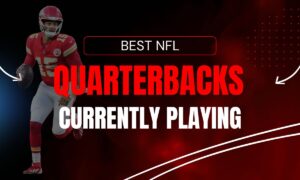The NFL salary cap has been the center of much discussion in 2021. With free agency beginning on Wednesday and the NFL draft a month away, an understanding of the NFL’s financial rules can enrich a fan’s understanding of their team’s roster moves.
Last week the NFL announced that the salary cap would be set at $182.5 million for the 2021 season. That is a decrease of $15.7 million from the 2020 cap limit of $198.2 million. The league has increased its salary cap every year since having an uncapped season in 2010; 2021 will break that trend.
The NFL salary cap is the equivalent of tax laws for the 32 NFL franchises. One point to note is that the cap only applies to players, not coaches, trainers, or other personnel. Here is a breakdown of the most important aspects of the NFL salary cap.
What Is The Salary Cap?
A salary cap is a spending limit professional leagues implement to level competition between small market and large market teams. The NFL is a revenue-sharing league, and all income streams are shared between the 32 teams then divided up at the end of the season.
The NFL uses a hard salary cap, meaning that no team can exceed the cap spending limit when in season; if they do, the result of the infraction is either fines or loss of draft picks. Teams must be in compliance with the salary cap no later than March 17th, the start of the league new year.
The formula for calculating the salary cap is as follows, using the previous season’s revenue as a starting point:
- Revenue calculations x CBA percentage = Players revenue share
- Player revenue share – projected benefits = The amount available for salaries
- The amount available for salaries/number of teams = Base salary cap per team
The total revenue of the NFL is calculated as a combination of revenue generated from television deals, sponsorship, and day-to-day sales such as tickets, merchandise, and refreshments.
Maximum and Minimum Spending
The logic behind having a salary cap is that it protects the lowest-earning teams from the highest-earning teams spending more money, thus leveling the competition for free agents. But what about a team intentionally spending less so they can tank?
The league sets a spending minimum that is calculated over a four-year period, unlike the maximum spending, which is calculated on a yearly basis. There are two provisions that set the rules for spending.
The “Guaranteed League-Wide Cash Spending” provision demands that for each of the four-year periods, at least 95% of the league-wide salary cap must be spent. Individually teams must spend a minimum of 89% of their salary cap for that four-year period.
The second provision governs what happens to a team that fails to spend the required 89% of its cap over the four-year period. The “Minimum Team Cash Spending” provision states that any shortfall shall be paid on or before the next September 15th by the team who fell short. Payment is made directly to any players on the roster during those four years.
Once teams have met their 89% spending obligation, it is up to the league to cover the shortfall up to the 95% threshold. If a shortfall was to happen, the league would pay that needed amount to reach the threshold directly to any and all players on a club roster during any of the past four seasons.
Contract Details
NFL contracts are not structured the way they are reported. Most of the time, they back-laden, meaning the player earns more at the end of the contract. This structure is beneficial for teams because it kicks the cap down the road and is spread out over a number of years instead of one large lump sum. Teams will incentivize back heavy deals with signing bonuses that are paid upfront.
A prime example is Taysom Hill’s new extension with the New Orleans Saints. The Saints began the offseason with an eye-popping $77 Million OVER the cap limit. Restructuring a contract, trading a player, and cutting from the roster are the three options teams have to free up cap space.
In Taysom Hill‘s case, the Saints chose to restructure his contract in order to spread out his cap hit. Last season Hill signed a two-year, $21 million dollar contract with $16 million guaranteed. It was a back-end contract to save money while retaining Hill last year. Since it is guaranteed the Saints can’t just cut him. So what the Saints did was continue kicking the cap hit down the road. At the beginning of this week, the Saints signed Hill to a four-year $140 million contract extension.
The catch to this deal is that they are all voidable, meaning the Saints can pull out after one year. The logic behind this deal is to spread Hill’s $16 million cap hit for this year out across four years. First, convert $9.686 million in salary to a signing bonus; that bonus will be applied to the Saints’ cap in annual increments of $1.9372 million from 2021 to 2025. Hill’s 2021 cap number also contains the original $4 million in bonus proration and $1.439-million roster bonus from his 2020 deal and his reduced salary of $1.034 million. Add it all up ($1.9372M + $4M + $1.439M + $1.034M), and Hill’s 2021 cap hit is $8.41 million, or $7.75 million less than the $16.159 million it would have consumed without these moves.
There is a lot more that goes into the NFL salary cap; as I said before, the rules are written like tax laws and are covered over a number of pages. This was a brief guide to help give insight into some of the moves teams will be making over the offseason.









